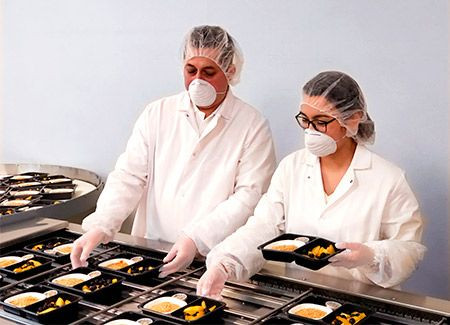Researchers Print New Sensors That Can Track Food Safety And Freshness

KEY POINTS
- 48 million cases, 3,000 deaths every year due to foodborne diseases in U.S.
- Researchers develop histamine sensors for food safety monitoring
- A cheap, scalable biosensor platform is underway
Checking the freshness of fish and meat products is now as easy as dipping a sensor into the dish. Researchers at the Iowa State University have printed out sensors that can detect minute levels of rot in food.
They used high-resolution aerosol jet printers to print sensors on a flexible polymer. The sensors can detect histamine down to 3.41 parts per million (ppm). Histamine is an allergen that can indicate spoiled fish and meat.
The U.S. Food and Drug Administration deems as safe up to 50 ppm histamine in fish.
How does the new sensor work?
The disposable food-safety sensor is made of graphene, a super material renowned for its strength, electrical conductivity, flexibility and biocompatibility.
Its affordability and precise aerosol-jet-printing technology enable the creation of high-resolution electrodes necessary for electrochemical sensors that can detect tiny particles like histamine.
"This fine resolution is important. The closer we can print these electrode fingers, in general, the higher the sensitivity of these biosensors,” EurekAlert quoted Jonathan Claussen, the study’s lead researcher and an associate professor of mechanical engineering at Iowa State University.
Their research paper describes how graphene electrodes were aerosol jet-printed on a flexible polymer, which was then converted to histamine sensors by chemically binding histamine antibodies to it.
The histamine not only blocks electron transfer but also elevates electrical resistance and that change in resistance will be measured and recorded by the sensor.
The researchers highlighted that their new printed sensor isn’t meant only for fish. Since bacteria in food produce histamine, it can be a good indicator of a food product’s shelf life.
“Beyond the histamine case study presented here, the AJP and functionalization process can likely be generalized to a diverse range of sensing applications including environmental toxin detection, foodborne pathogen detection, wearable health monitoring, and health diagnostics,” said the researchers in their paper published in ACS Applied Materials & Interfaces.
The researchers have been working with printed graphene for a long time and believe that the sensor's low cost is another characteristic that makes it very useful. Their new startup based in the Iowa University Research Park is in the process of licensing their new histamine and cytokine sensor technology.
© Copyright IBTimes 2024. All rights reserved.





















